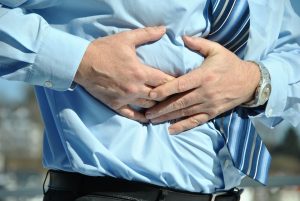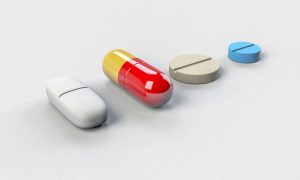Fatty liver or Non-alcoholic fatty liver disease (NAFLD) refers to fatty accumulation within the liver. When fat accumulation progresses, an inflammatory process is initiated within the liver parenchyma.
This is marked by an increase in liver enzymes and called nonalcoholic steatohepatitis. Nonalcoholic steatohepatitis (NASH) may progress to a stage of cirrhosis and Fibrosis in a minority of patients.

Fatty liver and the risk of liver cancer.
Patients who progress to a stage of liver cirrhosis, the risk of hepatocellular carcinoma is increased several times compared to the general population.
The recent study published in Gastroenterology in August 2018 has shown that the risk of hepatocellular carcinoma increases about 10 times in patients with non-alcoholic fatty liver disease.
Those with advanced liver disease secondary to nonalcoholic steatohepatitis the risk increases up to 500 times.
Nonalcoholic fatty liver disease and alcoholic fatty-liver disease have similar histological appearances. Non-alcoholic fatty liver disease is very common in patients with metabolic syndrome.
Metabolic syndrome is characterized by obesity, diabetes, dyslipidemias, and hypertension.
Prevalence of NAFLD
The prevalence of nonalcoholic fatty liver disease in the united states is considered to be around 40%. while the prevalence of nonalcoholic steatohepatitis is present in about 3%. worldwide, the nonalcoholic fatty liver disease is present in about 30% of the cases.
Risk factors for nonalcoholic steatohepatitis include male sex, old age, hypertension, obesity, and diabetes.

Clinical features of the NAFLD
Most patients are asymptomatic. Others may present with fatigue, malaise, and vague right hypochondrial discomfort. Furthermore, patients may present with abnormal liver function tests or fatty liver may be picked up on Ultrasound studies.
Clinical examination maybe suggestive of hepatomegaly. Abnormal Liver function tests include mild to moderate elevation of ALT (alanine aminotransferase) and AST (aspartate aminotransferase).
The role of AST and ALT in the diagnosis
ALT and AST are usually elevated 2 to 5 times above the upper limits of normal. AST: ALT is usually less than 1 in NAFLD but greater than 2 in alcoholic liver disease.
Alkaline phosphate may be mildly elevated. However, bilirubin typically increases in patients with the onset of cirrhosis. Serum ferritin may be elevated usually about 1.5 times the upper limit of normal.

Diagnosis of nonalcoholic fatty liver disease requires all of the following
- hepatic steatosis by imaging
- exclusion of significant alcohol consumption
- exclusion of other causes of hepatic steatosis
Liver biopsy may be considered in those patients with undiagnosed liver dysfunction, reflected by abnormal liver function test and those with progressive disease.
Equally important is the use of non-invasive testing like fibroscan/ elastography for evaluating and staging of liver fibrosis.
Patience with a advanced liver disease has higher mortality rates usually due to cardiovascular diseases. Other patients may also develop hepatocellular carcinoma.

Treatment of Fatty liver
The only treatment for NASH and NAFLD is weight loss. Patients should lose weight @ 0.5 to 1 kg per week. In order to reduce the risk of further liver damage, all patients without serological evidence of immunity should be vaccinated for hepatitis A and B.
Vitamin E may be given at a dose of 400 International units for advanced Fibrosis who do not have diabetes and cardiovascular disease.

Avoid Alcohol consumption
All patient should be advised to avoid alcohol consumption. Patients who wish to reduce weight should be advised to take less than 900 Kilocalories per day. those who are obese and overweight, bariatric surgery may provide a significant weight reduction and reduction in fatty steatosis.
Role of Pioglitazone and orlistat
Drugs like pioglitazone have also been associated with improvement in liver Histology but because of the side effects like weight gain heart failure and fluid retention, these drugs should be used with caution. Orlistat has no role in patients with fatty liver disease but may be used in patients who are overweight and obese.
Role of Ursodeoxycholic acid
Other Drugs like losartan and ursodeoxycholic acid may be tried as well. Likewise, ursodeoxycholic acid in combination with vitamin E has also been studied in various studies with variable results. Patients who develop cirrhosis and hepatocellular carcinoma should be treated accordingly.